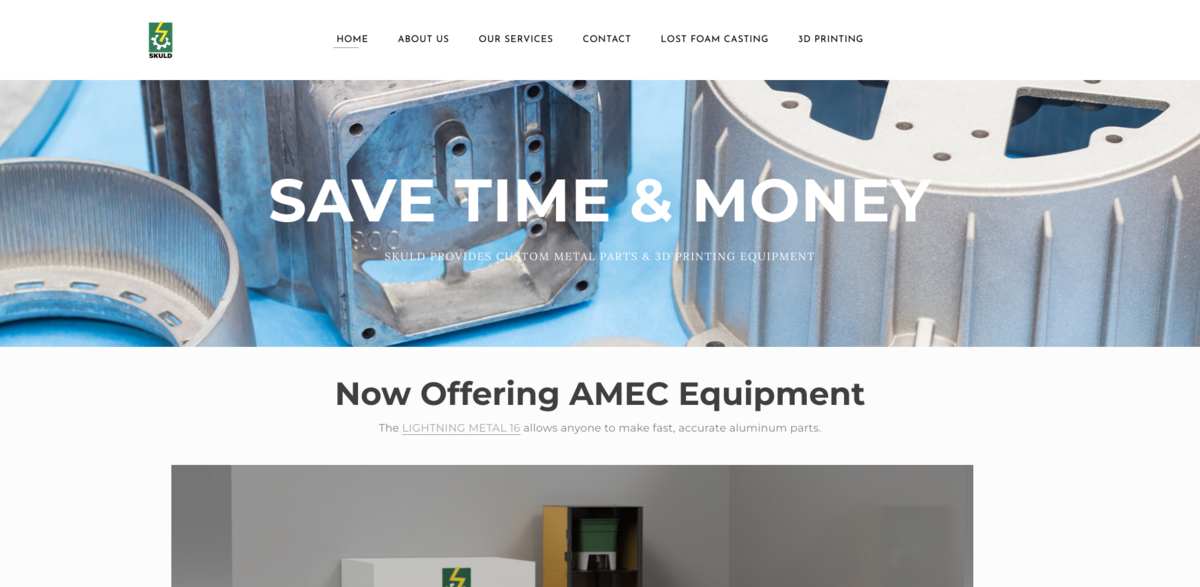What is the Skuld Project?
Skuld LLC is pushing the boundaries where metallurgy meets innovation. This project is all about combining full-scale foundry capabilities with next-generation additive and digital manufacturing — right here in the USA. Skuld specializes in Lost Foam Casting technology, working closely with the United States Department of Energy to develop ductile iron that’s 70% thinner than traditional methods. The goal? To create lightweight prototypes that improve fuel efficiency and reduce carbon emissions. It’s a game-changer in manufacturing metal parts, blending advanced materials and processes to deliver parts others simply can’t — faster, cleaner, and with unmatched precision.
Main Benefits and Key Figures
Skuld’s integrated manufacturing capabilities bring a ton of advantages to the table. Here’s a quick snapshot:
- 20 million lbs/year casting capacity, scalable up to 120 million lbs.
- 32,000 sq ft advanced manufacturing facility housing foundry, induction and aluminum furnaces, CNC machines, heat treatment, and a full test lab.
- In-house 3D printer farm with 11 printers, capable of rapid tooling and patterns up to one cubic meter.
- Lost Foam Casting reinvented — tooling costs down to sand-casting levels, with 10× better tolerances.
- High-strength ductile iron parts at one-third the wall thickness, enabling lighter, stronger components.
- Induction furnaces for iron and steel parts up to 800 lbs, gas furnace for aluminum alloys up to 200 lbs.
- Materials expertise spanning aluminum, nickel, custom alloys, steel, gray and ductile iron, copper, bronze, and soon brass.
Advanced Manufacturing Techniques
Skuld’s approach is all about accelerating results — from rapid prototyping to full-scale production. Their proprietary Additive Manufacturing Evaporative Casting (AMEC) process pairs 3D printing with lost foam casting, making it faster and easier to qualify parts than traditional direct metal additive manufacturing. This means prototypes can quickly turn into scalable production runs without the usual delays. Plus, with CNC machining, heat treatment, and in-house testing, every part meets exacting standards before it leaves the facility.
Facility and Capabilities
The heart of Skuld’s operation is a 32,000 square foot facility packed with cutting-edge equipment. Imagine a foundry combined with induction and aluminum furnaces, multiple CNC machines for precision finishing, and a materials test lab that handles tensile, hardness, chemistry, and microscopic structure testing. Add to that an in-house 3D printer farm with 11 printers ready to produce rapid tooling and patterns, and you’ve got a powerhouse capable of handling projects from prototype to high-volume production — all under one roof.
Innovation in the Field: The BIFROST Bridge
One standout example of Skuld’s innovation is the BIFROST Bridge — a lightweight, rapid, and reliable modular bridge system built with thin-wall ductile iron. It’s designed for quick deployment: five people can set it up in about 15 minutes without cranes. Components weigh less than 280 lbs, and the bridge can handle loads up to 40 tons, with modular spans ranging from 5 to 50 feet. This project showcases how advanced metallurgy and manufacturing can solve real-world challenges with speed and efficiency.
Project Impact on Sustainable Development Goals (SDGs)
- SDG 9: Industry, Innovation, and Infrastructure — advancing manufacturing technologies and infrastructure.
- SDG 12: Responsible Consumption and Production — reducing waste and improving material efficiency.
- SDG 13: Climate Action — lightweighting parts to improve fuel efficiency and cut carbon emissions.
- SDG 17: Partnerships for the Goals — collaborating with the U.S. Department of Energy and academic institutions.
Bringing the Foundry to You
Skuld’s innovation doesn’t stop at their facility. Their Lightning Metal microfoundry and Conex containerized systems bring high-tolerance metal part production directly to the customer — whether that’s universities, defense depots, or commercial partners. This means parts can be prototyped, reverse-engineered, and fabricated on-site in hours, not months, cutting out the usual supply chain headaches. It’s a fresh take on manufacturing that’s as flexible as it is fast.





















